Ordering number:24569
Katana in Shirasaya with Koshirae (NBTHK Tokubetsu Hozon Token)(Consignment Sale)
Signature: Oite Nanki Shigekuni Zo Kore(Shodai)
於南紀重国造之(初代)
Sayagaki: Oite Nanki Shigekuni Tsukuru Kore.
Suriage, Seven-character signature. Still, it is the work of the first-generation Shigekuni. The itame grain mixed with flowing masame, the thick ji-nie, and the jifu with chikei are clear and bright. The hamon is suguha with fine nie, with the boshi sweeping upwards. This work follows the traditional craftsmanship of the Tegai school, showing its typical excellence. Blade length: 2 shaku 3 sun 5 bu (approx. 71.39 cm or 28.10 in). Inscription by Mr.Tanobe.
Shinto: Ryowazamono, Saijo Saku, Kii province
(We divide swords into four categories: Saijo Saku, Jyojyo Saku, Jyo Saku, and Regular Saku based on the workmanship. This particular piece ranks as Jyojyo Saku for Nanki Shigekuni.)
Polished
Habaki: Gold foil double habaki
Blade Length: 2 shaku 3 sun 5 bu 5 rin
(approximately 71.45 cm or 28.12 in)
Curvature (Sori):4 bu (approximately 1.21 cm or 0.48 in)
Mekugi Ana:2
Width at Base (Motohaba):3.09 cm (1.22 in)
Width at Tip (Sakihaba):2.11 cm (0.83 in)
Thickness of Rim (Kasane): 0.73 cm (0.29 in)
Sword Weight: 830 g (1.83 lbs)
Era:Edo period, around the Kanei era (1624–1644)
Shape: Approximately 10 cm (3.94 in) has been shortened. It is said that Nanki Shigekuni originally forged much longer swords, which were cut down during the Edo period as per regulations.
Jigane (Forging Pattern): The tight itame grain mixed with small mokume and chikei, forming the highest quality jigane.
Hamon (Temper Pattern):Small nie-based suguha with a deep nioiguchi, with soft ko-ashi entering the straight hamon. The boshi is round with a sweeping end.
Features: Nanki Shigekuni, originally from Yamato province, was also known as Kuro or Saburo. He crafted swords in Suruga with his father. In the early Keicho period, he was employed by Tokugawa Ieyasu, and in 1615, he moved to Kishu province, following Tokugawa Yorinobu. Living in Wakamatsu’s Marunouchi East, near Kaji Bridge, he was highly regarded for his exceptional craftsmanship and used only the finest quality steel. His work is notable for its suguha hamon and exquisite jigane, reflecting his Yamato roots, but he also produced many swords in the Soshu-den tradition. The beauty of his suguha hamon and the clarity of the jigane are especially outstanding.
Koshirae (Mountings):
Tsuba (Handguard):Circular iron tsuba with a silver rope-like design around the rim, engraved with motifs resembling Edo-period currency.
Fuchi-Kashira (Hilt Collar and Pommel):
Iron base with gold inlay depicting a dragon in high relief. The design features gold detailing on a raised surface.
Kojiri (End Cap):Iron base with a dragon motif in high relief, featuring gold inlay around the edge.
Saya (Scabbard):Ishime-style textured surface in dark brown, decorated with the Tokugawa family crest in gold.
Menuki (Hilt Ornaments):Shakudo with nanako finish, featuring a dragon motif in high relief with gold accents.
Aoi Art's Comment:This is a work by the first-generation Nanki Shigekuni, featuring a deep nioiguchi and a beautiful itame grain, forming excellent jigane. The koshirae is also superb, making this a top-tier set.
NBTHK Tokubetsu Hozon Token
Aoi Art Certification
Whole Oshigata
Price:3,500,000JPY
ご注文はこちら
/a>
Related Items:
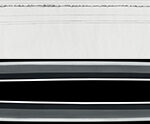 Katana: Naniwa ju Gassan Unryushi Sadakazu Kitae (Kokuin) (NBTHK Tokubetsu Hozon Token) (NBTHK Tokubetsu Kicho Token)
Katana: Naniwa ju Gassan Unryushi Sadakazu Kitae (Kokuin) (NBTHK Tokubetsu Hozon Token) (NBTHK Tokubetsu Kicho Token)
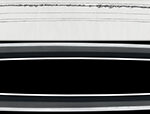 Tachi:Gassan Sadakatsu Kinsaku.(NBTHK Hozon Token)
Tachi:Gassan Sadakatsu Kinsaku.(NBTHK Hozon Token)
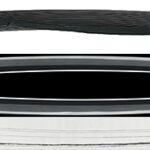 Katana: Hizen Koku Ju Omi Kami Tadayoshi (6th Generation)(NBTHK Toikubetsu Hozon Token)
Katana: Hizen Koku Ju Omi Kami Tadayoshi (6th Generation)(NBTHK Toikubetsu Hozon Token)
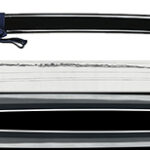 Katana: (Aoi Mon) Echizen Yasutsugu(NBTHK Tokubetsu Hozon Token)
Katana: (Aoi Mon) Echizen Yasutsugu(NBTHK Tokubetsu Hozon Token)
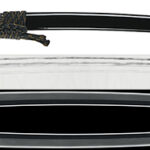 Katana:Mumei (attributed to Den Hosho).(NBTHK Tokubetsu Hozon Token)
Katana:Mumei (attributed to Den Hosho).(NBTHK Tokubetsu Hozon Token)
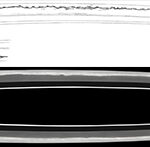 Katana: Hoki Kami Ason Masayuki
Katana: Hoki Kami Ason Masayuki







